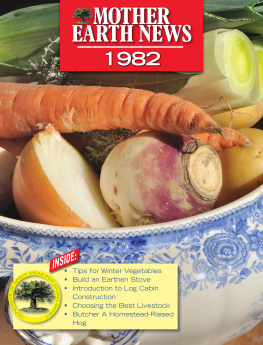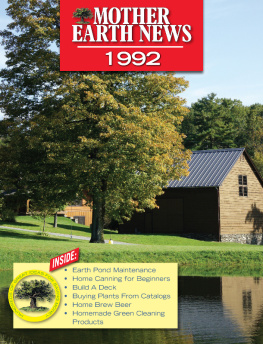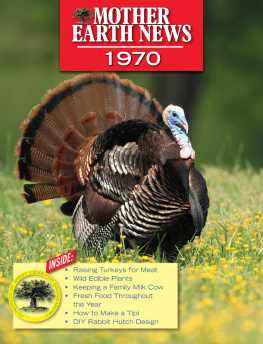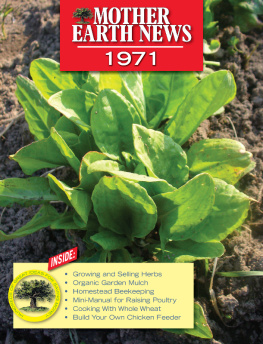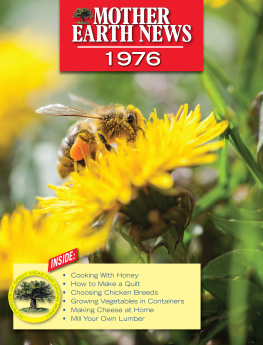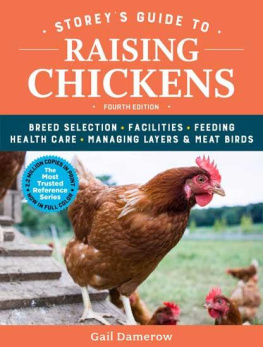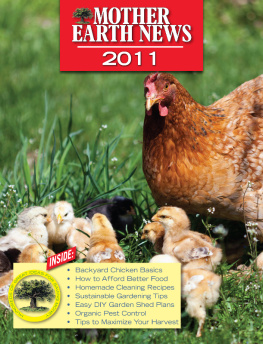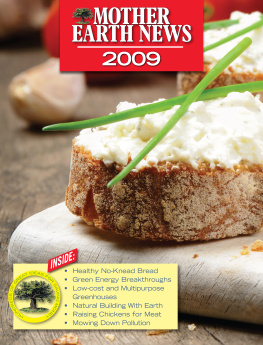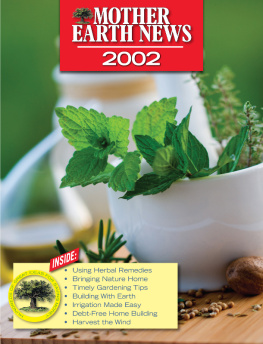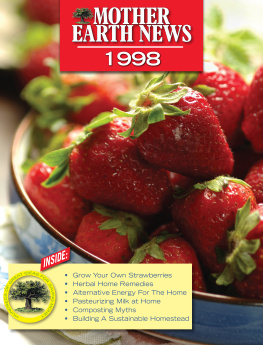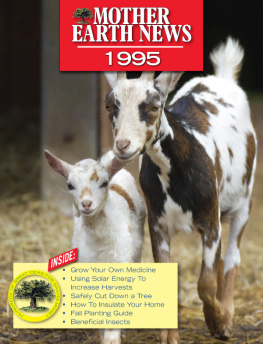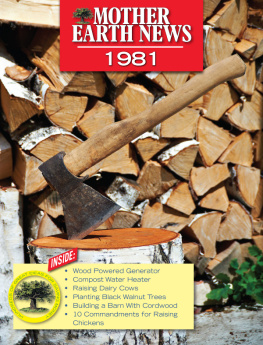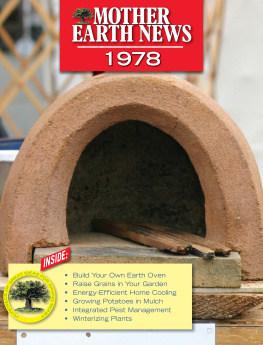Mother Earth News - Mother Earth News 1982
Here you can read online Mother Earth News - Mother Earth News 1982 full text of the book (entire story) in english for free. Download pdf and epub, get meaning, cover and reviews about this ebook. year: 1982, genre: Science / Home and family. Description of the work, (preface) as well as reviews are available. Best literature library LitArk.com created for fans of good reading and offers a wide selection of genres:
Romance novel
Science fiction
Adventure
Detective
Science
History
Home and family
Prose
Art
Politics
Computer
Non-fiction
Religion
Business
Children
Humor
Choose a favorite category and find really read worthwhile books. Enjoy immersion in the world of imagination, feel the emotions of the characters or learn something new for yourself, make an fascinating discovery.
- Book:Mother Earth News 1982
- Author:
- Genre:
- Year:1982
- Rating:4 / 5
- Favourites:Add to favourites
- Your mark:
- 80
- 1
- 2
- 3
- 4
- 5
Mother Earth News 1982: summary, description and annotation
We offer to read an annotation, description, summary or preface (depends on what the author of the book "Mother Earth News 1982" wrote himself). If you haven't found the necessary information about the book — write in the comments, we will try to find it.
Mother Earth News 1982 — read online for free the complete book (whole text) full work
Below is the text of the book, divided by pages. System saving the place of the last page read, allows you to conveniently read the book "Mother Earth News 1982" online for free, without having to search again every time where you left off. Put a bookmark, and you can go to the page where you finished reading at any time.
Font size:
Interval:
Bookmark:

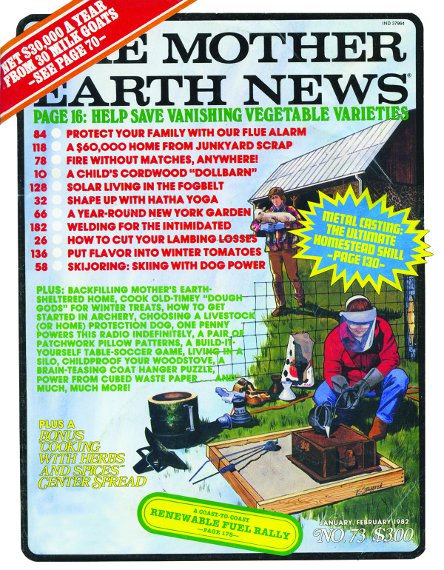
Modeled after MOMs life-sized original, this easily made toy will provide hours of fun.
After MOTHERs stackwood livestock shelter was completed last spring, research staffer Clarence Goosen was so taken with the buildings design that he decided to build a model of it as a plaything for youngsters... and you can see the handsome result of his handiwork in the accompanying photo. Better still, by reading through the following construction details, youll be able to delight your animal-loving children with a similar downhome toy. Clarence estimates that the project requires about eight hours-and a few inexpensive (or even free) materials-to complete.
To begin, cut out a 10 X 16 section of tempered Masonite hardboard to serve as the barns floor. The frame of the model pictured here was fashioned from one-by dimensional lumber, but you could use just about any leftover wood that might be cluttering your shop or work area. Cut two 1/2 X 16 pieces and two others that measure 1/2 X 9. Then fit the shorter timbers inside the other two and nail the rectangular frame together.
Next, youll need to make the posts to support that frame. Cut out 14 uprights, each measuring 1/2 square and 5 long, and glue them along the edge of the Masonite base... with five spaced evenly across the front of the building, five across the back, and two more on each end wall. Then drive one 4-penny nail up from the underside of the floor into each post, and nail the rectangle of beams atop the uprights.
The small-scale buildings back wall isnt exactly like that of its parent (which is earthbermed)... instead, its planked with 1/4 X 6 strips that are ripped from the one-by dimensional lumber and then glued onto the back of the model. (You could make this a cordwood wall, using the technique described below... but doing so would increase the models total assembly time.)
Now, you can take a break from your labors, go for a walk in some nearby woods... and collect a goodly supply of small branches (all about half an inch-more or less-in diameter) for the stackwood end walls of the barn. Once youve gathered a bundle of sticks, use a fine-toothed saw to cut them down to little logs, each about 3/4 long. Stack the twigwood into the open spaces between the posts, leaving the middle section open on one end to provide a side door for the structure. Clarence used white household glue to secure the tiny timbers... and left the open spaces between them unchinked.
The bottom story of the miniature outbuilding can now be finished off with three pairs of diagonal supports to firm up the posts on the front (open) side of the barn... plus two more that fit against the corner uprights. The tips of these braces are mitered 45, and each one measures about 1-1/2 on its longer side.
The removable upper story of the model barn features a loft floor and compound-angled roof somewhat like the one on MOTHERs full-sized building. Start with a hardboard floor thats 10-1/4 X 16 (it needs to be slightly wider than the first floor foundation to allow for a bit of overhang).
Next, wed suggest that you draw cardboard patterns to determine the shape of the trusses that support the roof at either end. Clarences design uses five 1/4 thick, 3/4-wide pieces-made from the same material as the frame-at each end... one bottom strip (which is affixed directly to the loft floor), two side strips, and two smaller pieces that meet under the main peak of the roof. (Of course, their ends will have to be angled to fit into each other.) The ridge of the gambrel roof shown in the diagram has an angle of 20, and the secondary peak slopes at 15.
To close in the structures ends, rip out 1/4 X 6 miniature planks-just as you did when making the lower storys back wall-and glue them together. Fasten these boards to the outside of the rafters, placing them so that theyll overhang the loft floor by approximately half an inch. Then trim off their top ends to match the outline made by the rafters.
Now, all the building needs is a roof, which will require three sections of Masonite hardboard. The smaller pieces each measure 2-1/2 X 18, and the back section (which is designed to overlap the barns rear wall) is 6 X 18. Run a bead of glue along the buildings supporting ends, where theyll contact the underside of the roof, and along the to-be-joined edges of the hardboard... then put the covering in place. (Youll probably have to stand over the barn and hold the roof down for a few minutes to insure a tight bond.) To finish the job, sand away any excess glue that seeps through to the outside... and hammer a wire brad into each corner of the back roof segment, to clamp it securely onto the rafters.
Thats all there is to it! Of course, if its likely that your pint-sized livestock managers will be playing outdoors with the miniature barn, you may want to weatherproof the structure with a couple of coats of polyurethane varnish... but otherwise, its now ready to be turned over to the active young imaginations in your household.
Kent Whealy
The Seed Savers Exchange
As we head into a new year, gardeners all across North America are beginning to dream of the coming spring. And many of them will celebrate the first months of 1982 by poring over newly arrived seed catalogs, in a delightful agony of indecision over which vegetables to order. Well, imagine finding out-as you leaf through your catalogs this winter in search of that succulent tomato you enjoyed last season or those hardy carrots that kept on producing until well after the first frost-that your pet varieties have been discontinued and replaced by unfamiliar specialty hybrids. Or suppose an elderly neighbor has, for years, shared a prized watermelon with you... but now that he or she has died, you cant find seed for the antique melon anywhere.
Well, you may be surprised to learn that those imaginary incidents are representative of events that are beginning to affect gardeners everywhere... and to alarm scientists in many countries. In short, were in the midst of a worldwide crisis-which few people even know about-that could actually threaten the survival ofmanyofour food crop species!
Dr. Erna Bennett, of the Crop Ecology Branch ofthe United Nations Food and Agriculture Organization, states, Genetic wipeout... might well be tomorrows greatest single problem, the problem offeeding the human species in the midst ofthe technological wealth it has created. The fact is that an increasing number of vegetable varieties are disappearing from the plant kingdom. Literally hundredsofcultivars become extinct every year, either because aging gardeners have no one to pass their heirloom seeds on to when they die, or because the varieties are dropped by seed companies for economic reasons.
But whats an individual to do, you may well ask. Is it time to throw up our hands, pack away the gardening tools, and stock more long-term storage foods in the cellar? Well, the future doesnt have to be quite that bleak. All over the world-and especially in the United States and Canada-concerned gardeners are taking action by seeking out antique or endangered species of
Font size:
Interval:
Bookmark:
Similar books «Mother Earth News 1982»
Look at similar books to Mother Earth News 1982. We have selected literature similar in name and meaning in the hope of providing readers with more options to find new, interesting, not yet read works.
Discussion, reviews of the book Mother Earth News 1982 and just readers' own opinions. Leave your comments, write what you think about the work, its meaning or the main characters. Specify what exactly you liked and what you didn't like, and why you think so.

